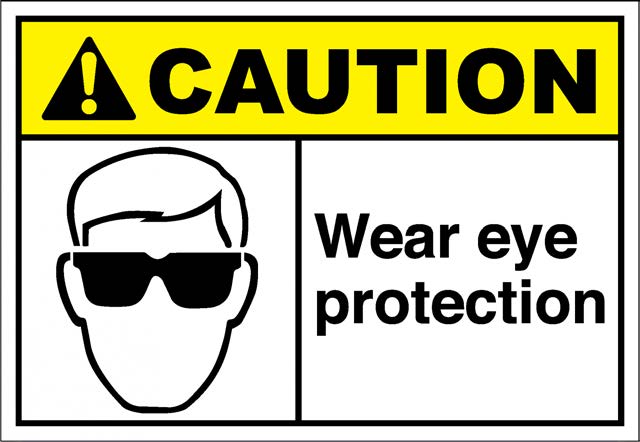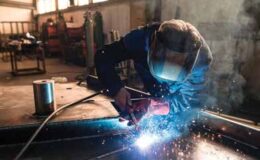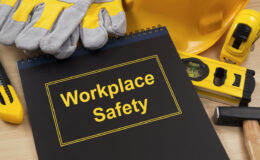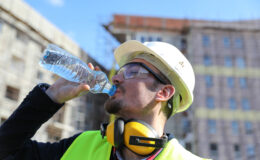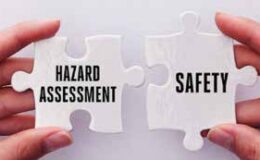By Chris Demeter, Senior Loss Control Consultant
Have you ever experienced an eye injury at work or maybe at home while using that new weed whacker? The National Institute for Occupational Safety and Health (NIOSH) reports that every day about 2,000 U.S. workers sustain job-related eye injuries that require medical treatment. Using the right eye protection can lessen the severity or even prevent many of these eye injuries.
Chemicals or foreign objects in the eye and cuts or scrapes on the cornea are common eye injuries that occur at work and even at home. Other common eye injuries come from splashes with grease and oil, burns from steam, ultraviolet or infrared radiation exposure, and flying wood or metal chips.
Workers experience eye injuries on the job for two major reasons:
- They were not wearing eye protection.
- They were wearing the wrong kind of protection for the job.
Over the years, I have witnessed many employees not wearing safety glasses in areas that definitely required them or wearing prescription glasses that are not approved by the American National Standards Institute (ANSI). ANSI is a private organization that oversees the development of voluntary consensus standards for products in the United States.
Contrary to what you may have read or heard, MIOSHA does not perform any type of testing on any personal protective equipment (PPE); they rely on ANSI to test equipment to certain standards. Without official tests being done, you cannot ensure that they will provide the maximum protection. Always look for an ANSI Z87.1-1989 stamp on your safety glasses.
Safety glasses must fit properly to provide adequate protection. In addition, safety glasses must be properly maintained. Scratched and dirty safety glasses reduce vision, which causes glare, and may contribute to accidents.
Combined with machine guards, screened or divided work stations, and other engineering controls, using the correct protective eyewear can help keep employees safe from eye hazards.
A first step in determining if safety glasses are needed is to identify physical and health hazards in the workplace. This process is known as a “hazard assessment.” Per OSHA’s 29CFR 1910.132, the employer must assess the workplace and determine if hazards that necessitate the use of personal protective equipment (PPE), including eye and face protection, are present, or are likely to be present, before assigning PPE to workers. A properly conducted hazard assessment identifies routine and non-routine activities and tasks, which have increased risk of exposure to eye and face hazards.
The hazard assessment is the responsibility of management or the health and safety administrator.
OSHA regulations specify employer and employee obligations to help reduce the risk of exposure to hazards. The hazard assessment should begin with a walk-through survey of the facility to develop a list of potential hazards according to the following basic hazard concerns:
- Impact (Flying fragments, objects, large chips, particles, sand, dirt, etc.)
- Dust (Nuisance dust)
- Chemical (Splash and irritating mists)
- Optical Radiation-Glare
- Heat (Hot sparks, splash from molten metal, high temperature exposure)
- Optical Radiation-Welding, cutting, torch brazing, torch solderingSample templates for a “Hazard Assessment” can be found on the MTMIC client portal through our website: https://www.mtmic.com/blog/
If you have never performed a hazard assessment and need guidance, contact your loss control consultant. We are ready to help.
Do not take chances with your precious eyesight! Protect it and save money to boot!

